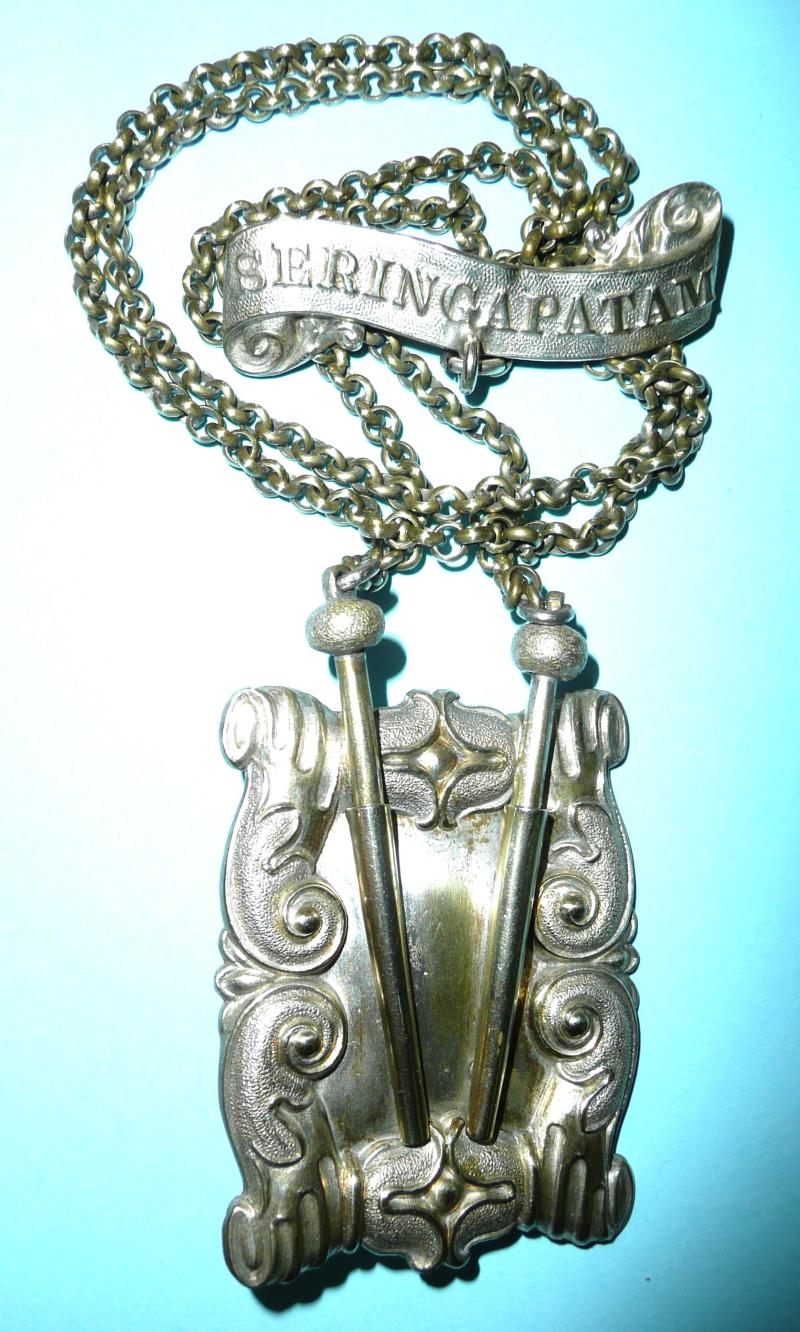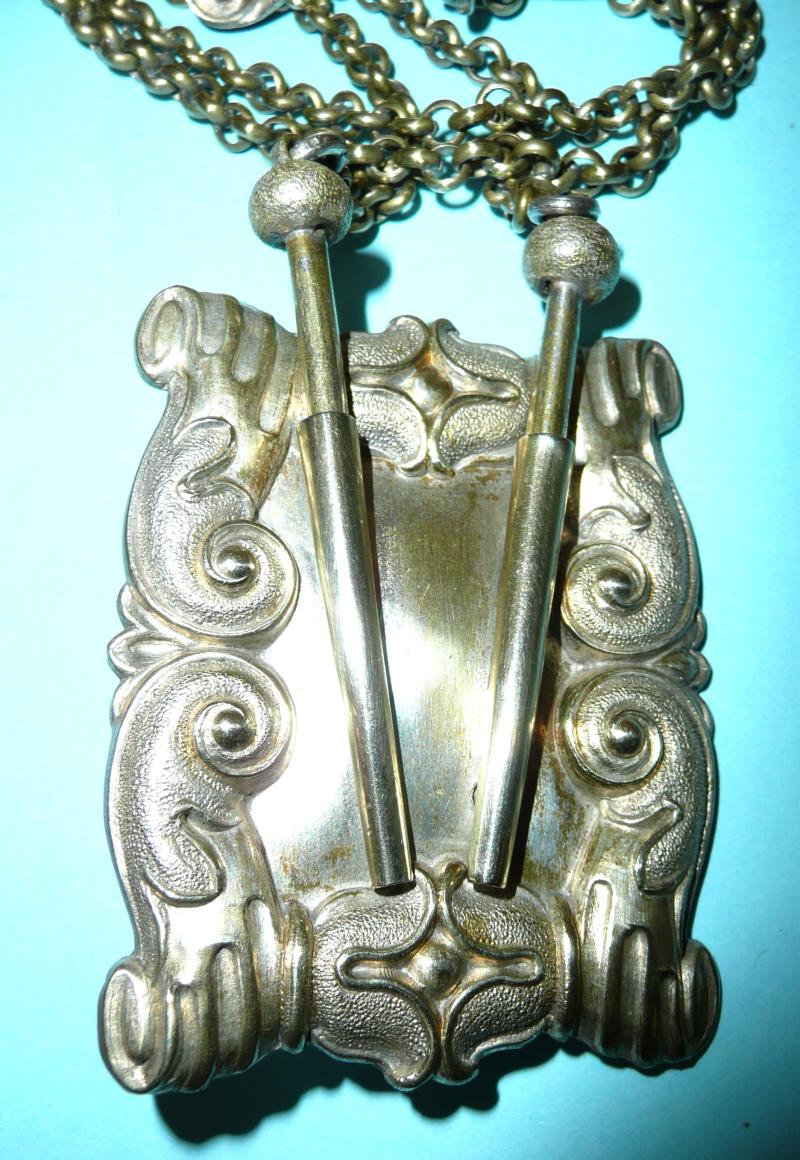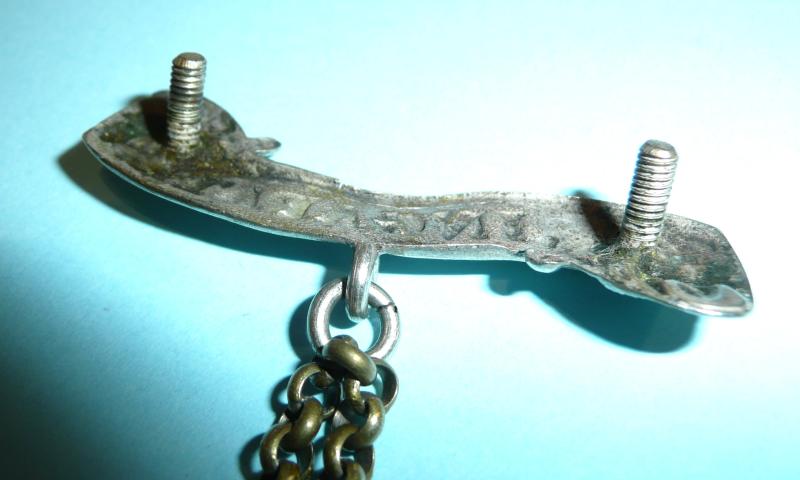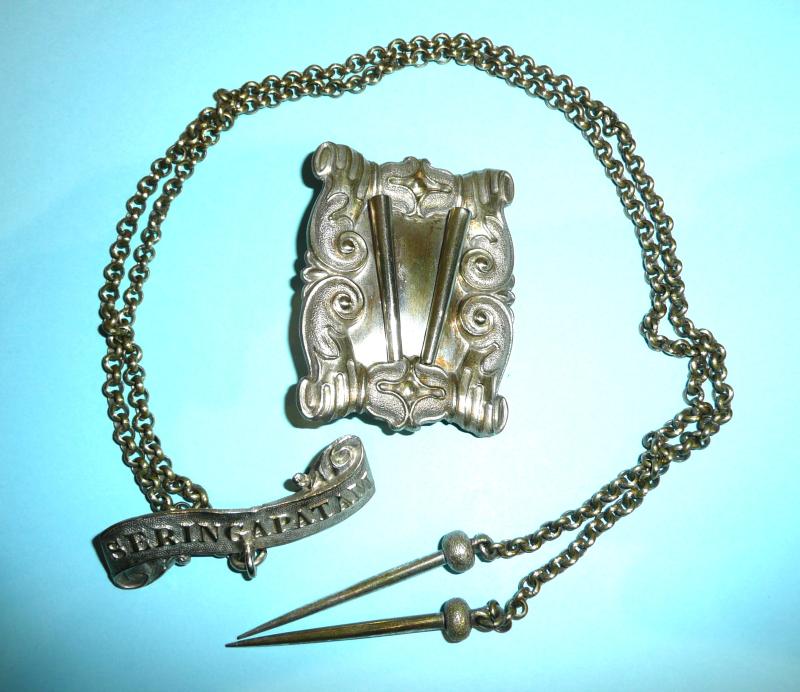Indian Army - 2nd Madras Light Cavalry / Lancers Officer's Pickers and Chains
A white metal set of officer's prickers of ornate rectangular form with two prickers with acorn finials, attached to a double white metal chain anchored to a single point on a decorative curved and floreated scroll with the embossed battle honour 'Seringapatam'. Complete with brass securing posts to both parts. Retaining nuts no longer present. This would have been fitted to the front of the cross pouch belt worn by both European and native officer's during the Victorian and Edwardian Period, by which time the prickers were purely an ornamental feature. Originally they were issued to light cavalry to disable enemy cannon. The pricker would be hammered into the cannon's touch-hole so that it could not be fired.
Whilst all four regiments of Madras Cavalry earned the battle honour 'Seringapatam', in recognition of their service in the 4th Mysore War of 1799 and especially their presence at the last stand of the mighty Tipu Sultan on 4th May 1799 at the fortress of Seringapatam, I believe this battle honour was the one mainly worn on their accouterments by the 2nd Madras Light Cavalry (as they became known in 1819).
Many of the early native regiments could only be raised through the co-operation of local rulers, and the early history of the 2nd Madras Lancers is an example of that. The regiment was first added to the Madras Presidency Army in 1776 as the 3rd Regiment of Cavalry (Stevenson's), but was recruited from cavalrymen of the Army of the Nawab of Arcot, Muhammad Ali Khan Wallajah. With the Nawab's permission, the Madras Army used the regiment to help defeat Hyder Ali during the 2nd Mysore War (1780-1784). The Mysore Wars earned the regiment the battle honours 'Sholinghur', 'Mysore', 'Carnatic' and 'Seringapatam' - the last stand of the mighty Tipu Sultan on 4th May 1799.
In 1784 it transferred to permanent British service as the 3rd Madras Native Cavalry but was confusingly re-numbered as the 1st Madras Native Cavalry in the same year, the 4th Madras Native Cavalry in 1786, and then the 2nd Madras Native Cavalry in 1788. This title remained in use until 1819 when they became the 2nd Madras Light Cavalry.
The 2nd Madras Light Cavalry saw little war service during the 19th century, and as with all of the Madras Army, remained loyal during the Indian Mutiny of 1857. Its next conflict was the 3rd Burma War (1885-1887), for which it received the battle honour 'Burma 1885-87'. The following year it was re-titled as the 2nd Regiment of Madras Lancers. In 1901 it was re-titled as the 2nd Madras Lancers, and under the Kitchener Reforms implemented in 1903, it became the 27th Light Cavalry. The unit became the 16th Light Cavalry in 1922.
Coll
Code: 69164
175.00 GBP





